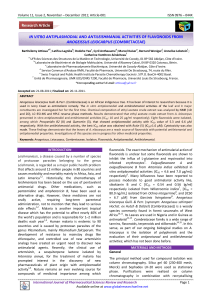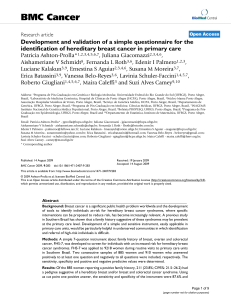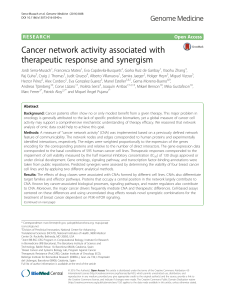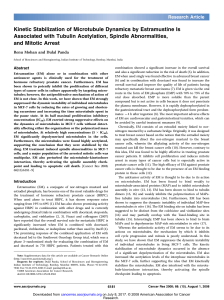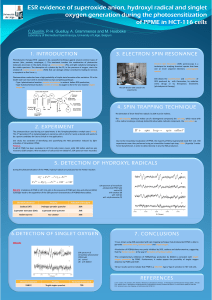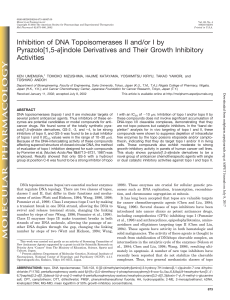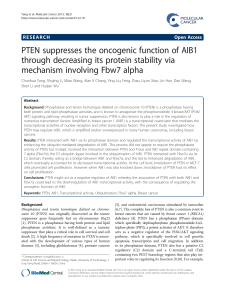Evento Ano Local Título
publicité
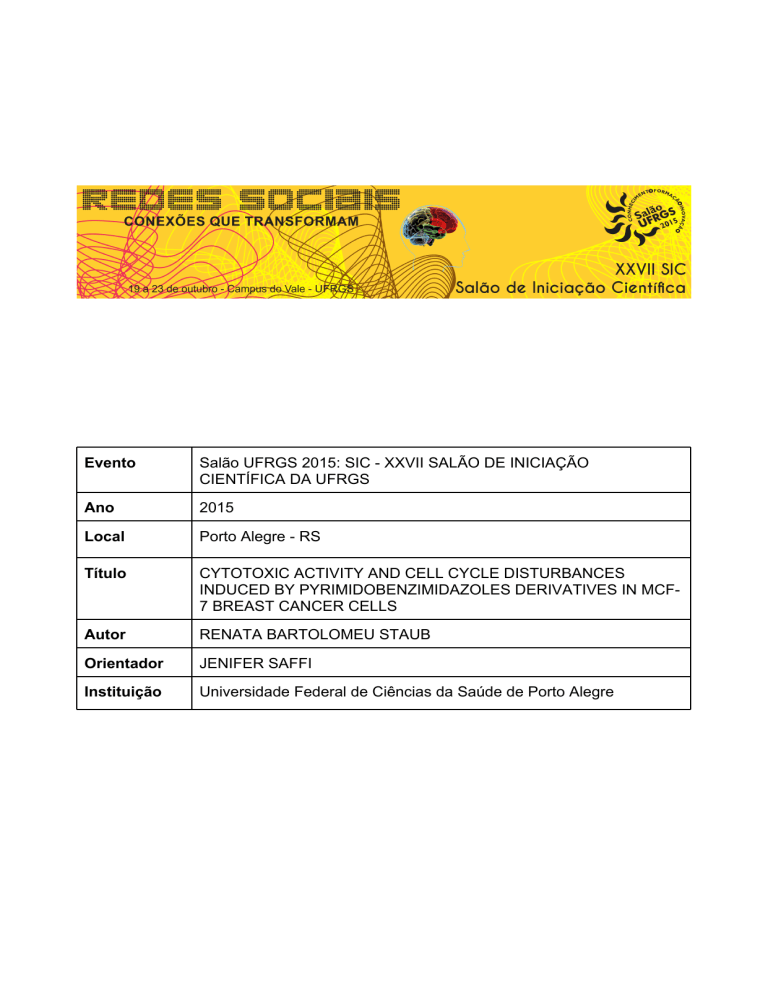
Evento Salão UFRGS 2015: SIC - XXVII SALÃO DE INICIAÇÃO CIENTÍFICA DA UFRGS Ano 2015 Local Porto Alegre - RS Título CYTOTOXIC ACTIVITY AND CELL CYCLE DISTURBANCES INDUCED BY PYRIMIDOBENZIMIDAZOLES DERIVATIVES IN MCF7 BREAST CANCER CELLS Autor RENATA BARTOLOMEU STAUB Orientador JENIFER SAFFI Instituição Universidade Federal de Ciências da Saúde de Porto Alegre CYTOTOXIC ACTIVITY AND CELL CYCLE DISTURBANCES INDUCED BY PYRIMIDOBENZIMIDAZOLES DERIVATIVES IN MCF-7 BREAST CANCER CELLS Staub RB1; Viau CM1; Berwig NA1; Amaral SS1; Zanatta N2; Saffi J1 1Department of Basic Health Sciences - Laboratory of Genetic Toxicology - UFCSPA, Porto Alegre, RS, Brazil 2Center for Heterocyclic Chemistry (NUQUIMHE), Federal University of Santa Maria, 97105-900 Santa Maria, RS, Brazil INTRODUCTION: Conventional chemotherapy is the main treatment for cancer and benefits patients in the form of decreased relapse and metastasis and longer overall survival. However, as the target therapy drugs is not wholly precise, it also results in quite a few side effects. In the present study, we report the biologic evaluation and molecular mechanism of a series of substituted 3-trifluoro(oxo)pyrimido[1,2a]benzimidazoles derivatives (PBZ 1-10) against the growth of several human cancer cell lines. METHODS: The potential antitumoral activity of the compounds was evaluated in vitro by examining the cytotoxic effects against human cancer cell lines (MCF-7, HepG-2, T24, HCT-116, HT-29 and CACO-2) and a nontumoral cell HEK-293T. After the treatment the cytotoxicity was expressed as IC50 values, i.e. the concentrations of the test agent inducing 50% reduction in cell numbers compared with control cultures. Selective index (SI) was calculated by IC50 in HEK-293T cells/IC50 in tumoral cells. The wellknown drug mitoxantrone (MXT) was used as reference compound. Compounds showing cytotoxic activities were subjected to other tests. Genotoxicity induction was analyzed by single-cell gel electrophoresis (comet assay). The production of reactive oxygen species (ROS) and changes in mitochondrial membrane potential (ΔΨm) were studied using specific fluorescence probes, DCFH(2)-DA (2',7'dichlorodihydrofluorescein diacetate) and rhodamine-123 by flow cytometry. The cell cycle was determined by flow cytometry and changes in protein expression (γ-H2AX) were examined by western blotting. Topo I activity was evaluated in a cell-free system. RESULTS: Our results suggest that PBZ 04, 05 and 09 exerted the highest cytotoxicity against MCF-7 cells, with IC50 values of 15.41, 19.52 and 8.11 μM, respectively. The most promising compound was the PBZ 09 in MCF-7 cells. Flow cytometric analysis indicates that PBZ 09 alters cell cycle progression, induces G1 arrest and causes DNA polyploidy (>4N). PBZ 09 generates ROS and γ-H2AX phosphorylation. The pretreatment with N-acetyl cysteine (NAC) abrogates PBZ 09-induced ROS production. Topo I inhibition was observed only for PBZ 09. CONCLUSION: Among the 3 compounds studied, PBZ 09 seems to present the most promising antitumoral activity, especially against MCF-7 cells. Our results demonstrate that PBZ 09 interacts with Topo I enzyme, generates ROS leading to DNA damage, γH2AX induction, cell cycle arrest and cell death. Therefore, further studies with this small molecule are essential for its safety management in breast cancer therapy. Financial Support: CAPES, CNPq and FAPERGS - Brazil.
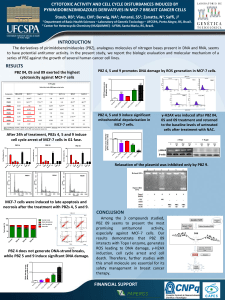

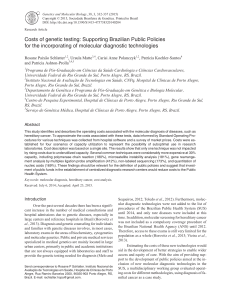
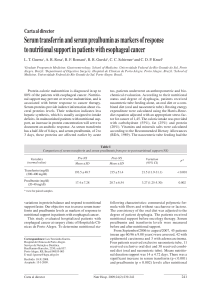
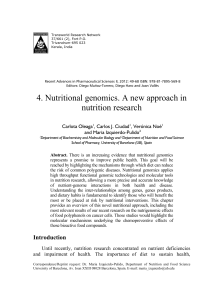
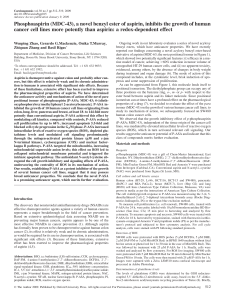
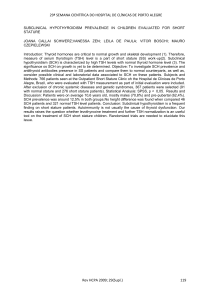
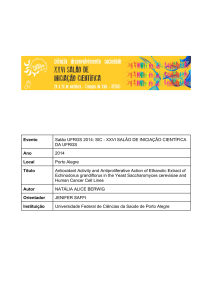
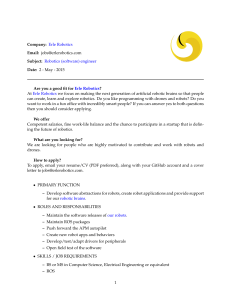
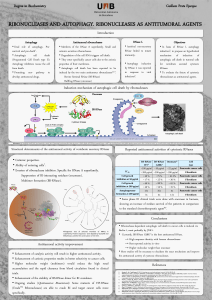
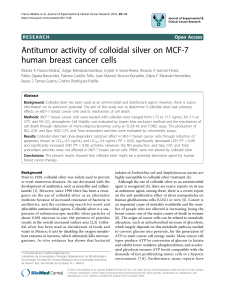
![Synthesis and antitumor evaluation of 8-phenylaminopyrimido[4,5-c]isoquinolinequinones](http://s1.studylibfr.com/store/data/008050748_1-17feee12f59ad69bcee9c544f11128db-300x300.png)
